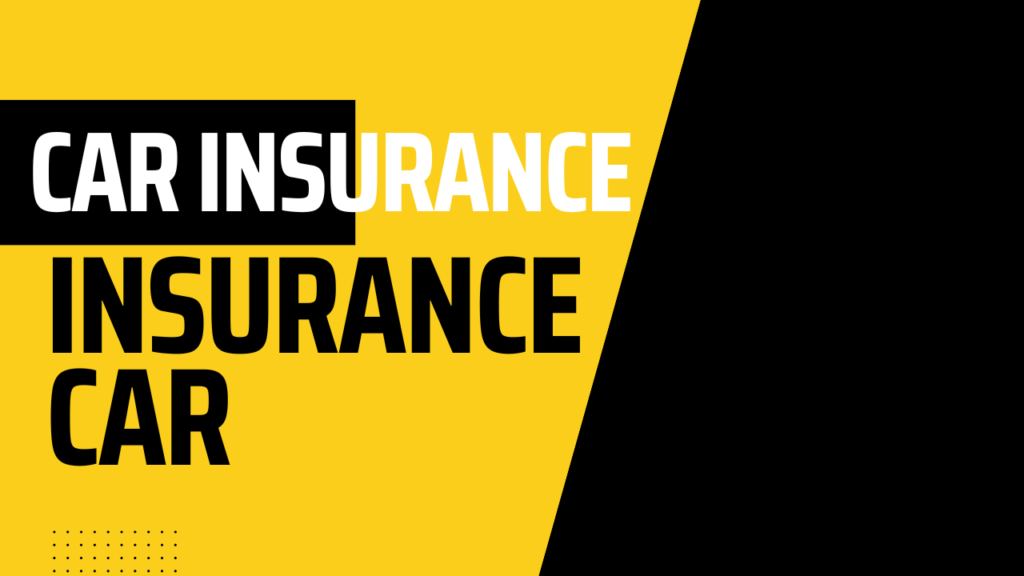Insurance You Can Pay With a Checking Account
Introduction
In today’s fast-paced world, convenience and security have become essential aspects of financial transactions. For Americans seeking insurance coverage, the option to pay with a checking account offers a seamless and hassle-free process. This article delves into the advantages and disadvantages of paying insurance premiums with a checking account in the American context, shedding light on how this payment method impacts both policyholders and insurers.
- The Convenience of Paying Insurance With a Checking Account
Paying insurance premiums with a checking account offers policyholders unparalleled convenience in managing their insurance obligations. In the hustle and bustle of modern life, time is precious, and the ability to streamline financial tasks is invaluable. With the option to pay insurance using a checking account, policyholders can bid farewell to the hassle of writing checks, searching for stamps, or physically visiting payment centers. Instead, they can easily authorize their insurer to deduct premiums directly from their checking account, ensuring timely payments without any manual effort.
Furthermore, many insurers now provide the option to set up automatic payments, adding an extra layer of convenience. Once the policyholder sets the schedule, payments will be made automatically on the specified due date, eliminating the need to remember individual payment deadlines. This seamless process enables individuals to focus on other aspects of their lives, confident that their insurance premiums are taken care of promptly.
In addition to eliminating the paperwork and time-consuming process, paying insurance with a checking account also facilitates efficient record-keeping. Policyholders can access their checking account history online or through their bank’s mobile app, allowing them to track their payment history easily. This level of transparency empowers individuals to stay on top of their finances, ensuring they are aware of all transactions related to their insurance coverage.
Moreover, the convenience of paying insurance with a checking account extends beyond just premium payments. Many insurance companies also offer flexible payment options, such as partial payments, where policyholders can choose to divide their premiums into smaller, more manageable installments. This flexibility can be particularly beneficial for individuals with varying income streams or those facing temporary financial constraints.
Ultimately, the convenience of paying insurance with a checking account streamlines the entire insurance payment process, making it an attractive option for policyholders seeking to simplify their financial responsibilities.
- Enhanced Security in Payment Transactions
Paying insurance premiums with a checking account not only provides convenience but also enhances the security of payment transactions for policyholders in the American context. With the increasing prevalence of cyber threats and data breaches, ensuring the safety of financial information is of paramount importance.
Reputable insurance companies prioritize the protection of their customers’ data and employ advanced encryption technologies to secure sensitive information during payment transactions. This encryption ensures that any data exchanged between the policyholder’s checking account and the insurer’s payment processing system remains confidential and unreadable to potential cyber attackers.
Moreover, financial institutions that facilitate checking account payments have rigorous security measures in place to safeguard their customers’ accounts. Banks and credit unions adhere to industry standards and implement multi-layered security protocols to prevent unauthorized access to customer data and funds. As a result, policyholders can have confidence in the security of their checking account information when making insurance payments.
The Electronic Fund Transfer Act (EFTA) and Regulation E further fortify the security of payment transactions through checking accounts. These federal regulations provide consumers with specific rights and protections when it comes to electronic fund transfers, including insurance premium payments. In the event of unauthorized transactions, policyholders have the right to dispute the charges and recover their funds, reducing the financial burden of potential fraudulent activity.
By leveraging the combination of robust encryption, stringent security measures from financial institutions, and the legal protections offered by EFTA and Regulation E, paying insurance with a checking account offers policyholders enhanced security and peace of mind. They can rest assured that their financial data and funds are well-protected throughout the payment process, minimizing the risks associated with cybercrime and unauthorized access to their checking accounts.
- Cost-Effective and Time-Saving
In the American context, paying insurance premiums with a checking account proves to be a cost-effective and time-saving option for policyholders. Unlike credit card transactions, which may incur additional fees or interest charges, checking account payments typically involve minimal or no extra costs. This cost-effectiveness can lead to significant savings for policyholders, especially for those with long-term insurance policies that require recurring premium payments.
With checking account payments, policyholders can avoid credit card fees and interest, making it a financially savvy choice for those seeking to maximize their budget. Over time, the cumulative savings from using a checking account for insurance payments can free up funds that can be allocated to other essential expenses or long-term financial goals.
Moreover, the time-saving benefits of paying insurance with a checking account are substantial. Setting up automatic payments ensures that insurance premiums are paid promptly and without any manual effort required from the policyholder. Once the schedule is established, the payments are processed automatically on the specified due date, eliminating the need for policyholders to remember individual payment deadlines or write checks.
The automation provided by paying with a checking account streamlines the entire insurance payment process, allowing policyholders to focus on other important aspects of their lives. It reduces the risk of missed payments and potential lapses in coverage, ensuring that policyholders maintain continuous insurance protection without any interruptions.
Additionally, paying with a checking account can be particularly beneficial for individuals with busy lifestyles or those who have multiple insurance policies to manage. With automatic deductions, policyholders can simplify their financial responsibilities, ensuring that all their insurance premiums are taken care of efficiently.
In conclusion, paying insurance premiums with a checking account offers both cost-effective and time-saving advantages for policyholders in the American context. The cost-effectiveness stems from the avoidance of credit card fees and interest charges, leading to significant savings over time. Simultaneously, the automation and convenience of checking account payments streamline the payment process, allowing policyholders to stay on top of their insurance obligations effortlessly. By leveraging this payment method, individuals can ensure that their insurance coverage remains active and that their financial resources are utilized optimally to meet their broader financial goals.
- Overdraft Concerns and Insufficient Funds
While paying insurance with a checking account offers numerous conveniences, it also comes with potential drawbacks related to overdraft concerns and insufficient funds. Automatic payments can lead to unexpected overdraft fees if a policyholder’s checking account balance is insufficient at the time of deduction. This situation may arise if the policyholder forgets to account for upcoming insurance premium deductions or if there are unexpected expenses that deplete the account balance.
Overdraft fees can be costly and may compound if the account remains in a negative balance for an extended period. Moreover, multiple overdraft incidents can negatively impact an individual’s financial standing and credit score, making it crucial for policyholders to closely monitor their account balance and ensure they have sufficient funds before automatic payments are executed.
To mitigate the risk of overdrafts and insufficient funds, policyholders should consider setting up account alerts with their banks. These alerts can notify individuals when their account balance falls below a certain threshold, enabling them to take prompt action to avoid overdraft fees. Additionally, establishing a buffer of funds in the checking account to cover unexpected expenses or premiums can act as a safety net, reducing the likelihood of overdrafts.
Policyholders should also ensure that they have a clear understanding of their insurance payment schedule and be proactive in managing their finances. By carefully planning for premium payments and regularly monitoring their checking account balance, individuals can avoid overdraft concerns and maintain a healthy financial position.
While automatic deductions offer convenience, some policyholders may prefer more control over the timing of their insurance premium payments. In such cases, switching from automatic deductions to manual payments or exploring alternative payment methods, such as online bill pay, can provide greater flexibility. Manual payment options allow individuals to choose the specific payment date that aligns with their financial situation, ensuring that premiums are paid when funds are readily available.
In conclusion, while paying insurance with a checking account streamlines the payment process and enhances convenience, policyholders must remain vigilant about potential overdraft concerns and insufficient funds. Responsible financial management, timely monitoring of account balances, and proactive planning are essential to ensure that insurance premium payments are made smoothly and without incurring any additional fees or financial strain. By striking a balance between automation and financial awareness, policyholders can fully harness the benefits of paying insurance with a checking account while mitigating any associated risks.
- Limited Control Over Payment Timing
One notable trade-off of paying insurance with a checking account is the limited control over payment timing. Automatic deductions from a checking account mean that premiums are withdrawn on pre-set due dates, which may not always align with a policyholder’s cash flow or financial priorities. Unlike manual payment methods, where individuals have the flexibility to choose the exact payment date, automatic deductions can sometimes catch policyholders off guard if they are not prepared for the withdrawal.
For individuals who receive income on a non-standard schedule or have irregular cash flow, automatic deductions may present challenges. If the insurance premium due date falls on a day when the account balance is low, it can strain the policyholder’s finances and potentially lead to overdrafts or insufficient funds, as discussed in the previous section.
Policyholders with varying income streams or financial commitments may find it beneficial to have more control over the timing of their insurance premium payments. The ability to adjust the payment date according to their specific financial situation can make it easier for them to manage other essential expenses and financial obligations.
To address the limitation of limited control over payment timing, policyholders can communicate with their insurers and explore alternative payment options. Some insurance companies may allow policyholders to switch from automatic deductions to manual payments or provide a grace period for premium payments. Additionally, individuals can set reminders or alerts to help them keep track of premium due dates and ensure that funds are available in their checking accounts when the payment is scheduled.
By actively staying on top of their insurance payment schedule and engaging in open communication with their insurance provider, policyholders can strike a balance between the convenience of automatic deductions and the need for more control over payment timing. This approach allows them to align premium payments with their cash flow and financial priorities, ensuring that insurance remains a valuable and manageable aspect of their overall financial plan.
In conclusion, while paying insurance with a checking account offers convenience and security, it also comes with the limitation of limited control over payment timing. Policyholders should be aware of their financial situation and take proactive steps to manage their premium payments effectively. By exploring payment options and communicating with their insurance provider, individuals can find a payment arrangement that best suits their financial needs and preferences, ensuring a seamless and well-managed insurance experience.
Conclusion
The option to pay insurance with a checking account presents a blend of convenience and security, making it an attractive choice for many Americans. It simplifies the payment process and ensures timely transactions, but it also requires careful financial management to avoid overdrafts or insufficient funds. As the insurance industry continues to evolve, finding the payment method that best suits individual preferences and financial goals becomes increasingly important. Whether one chooses the ease of automatic payments or values greater control over payment timing, the key is to strike a balance between convenience and responsible financial planning.
In the American context, paying insurance with a checking account presents a host of conveniences, providing policyholders with an efficient and secure way to meet their insurance obligations. The automation of payments, combined with enhanced security features, streamlines the entire process and eliminates the need for manual efforts in premium payments.
However, policyholders must remain vigilant about potential overdraft concerns and insufficient funds, as well as consider the trade-off of limited control over payment timing with automatic deductions. Striking a balance between convenience and responsible financial management is essential to fully harness the benefits of paying insurance with a checking account in the American insurance landscape. By staying informed and making informed decisions, policyholders can ensure that their insurance payments are not only hassle-free but also financially sound.
Insurance You Can Pay With a Checking Account, Insurance You Can Pay With a Checking Account, Insurance You Can Pay With a Checking Account, Insurance You Can Pay With a Checking Account, Insurance You Can Pay With a Checking Account, Insurance You Can Pay With a Checking Account,
Insurance You Can Pay With a Checking Account, Insurance You Can Pay With a Checking Account, Insurance You Can Pay With a Checking Account, Insurance You Can Pay With a Checking Account, Insurance You Can Pay With a Checking Account, Insurance You Can Pay With a Checking Account,
Insurance You Can Pay With a Checking Account, Insurance You Can Pay With a Checking Account, Insurance You Can Pay With a Checking Account, Insurance You Can Pay With a Checking Account, Insurance You Can Pay With a Checking Account, Insurance You Can Pay With a Checking Account,



